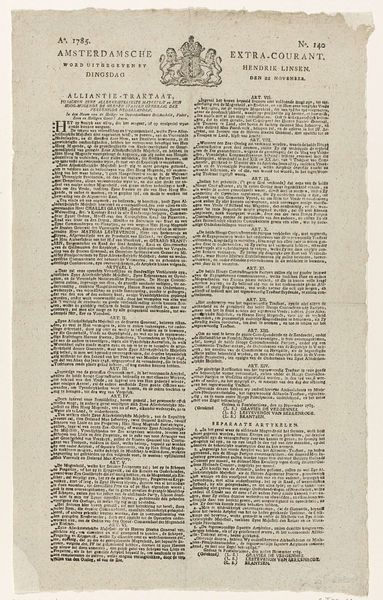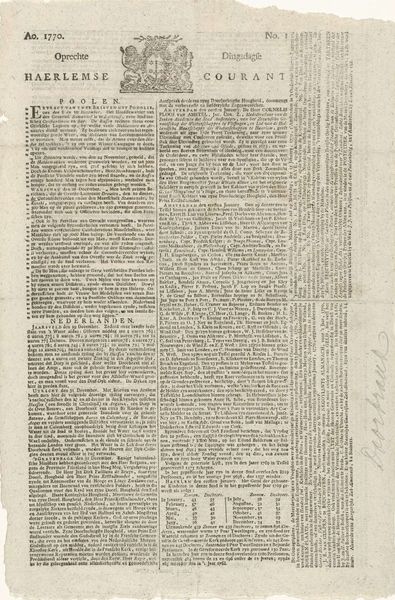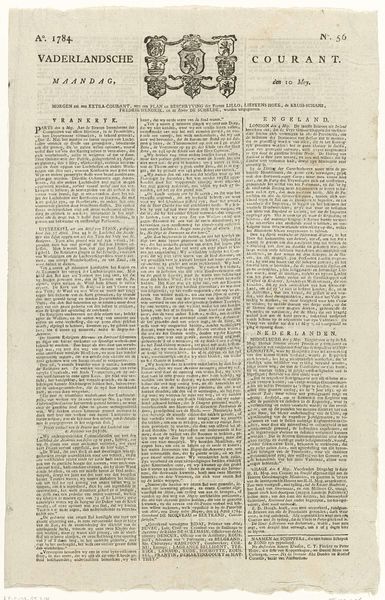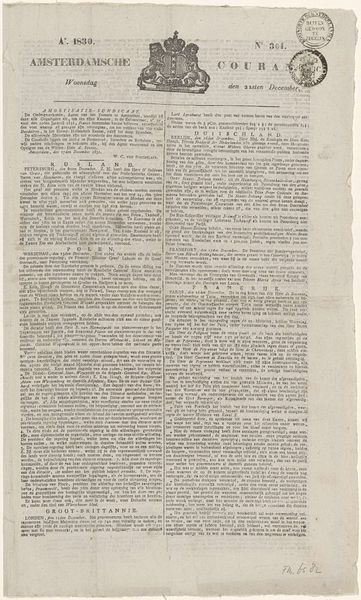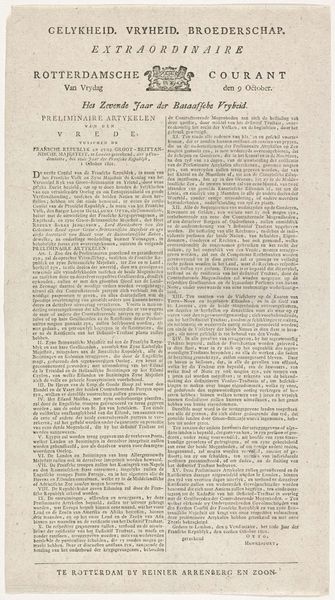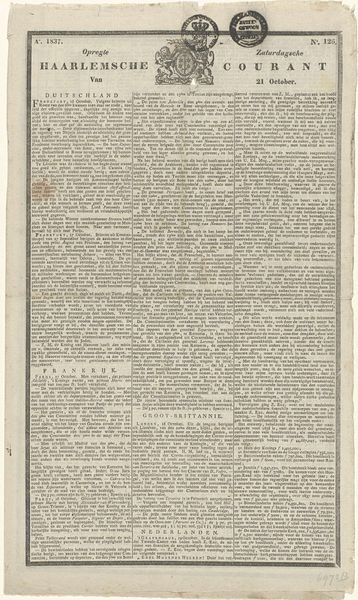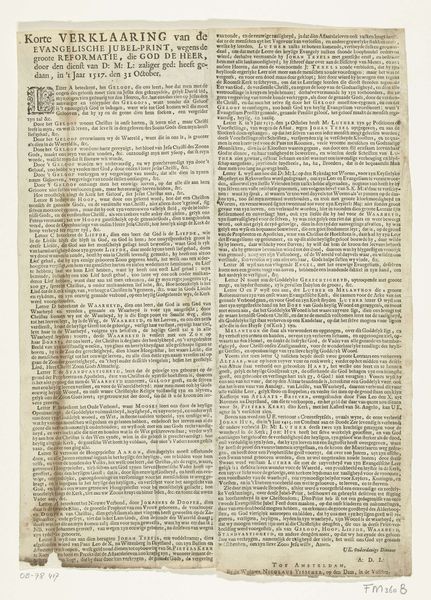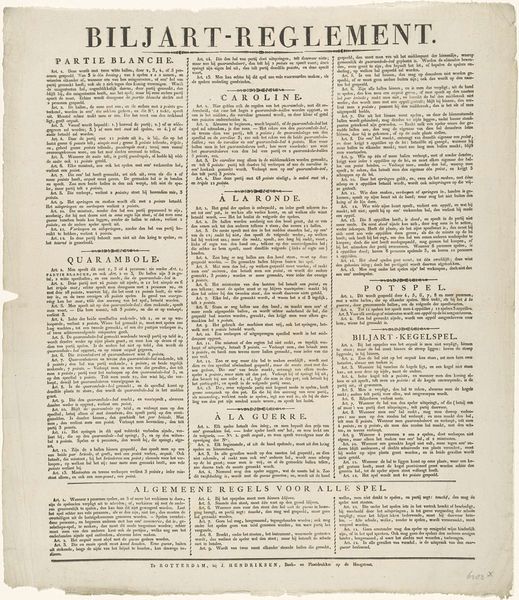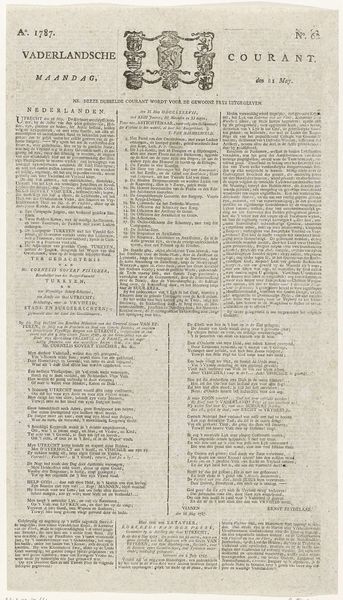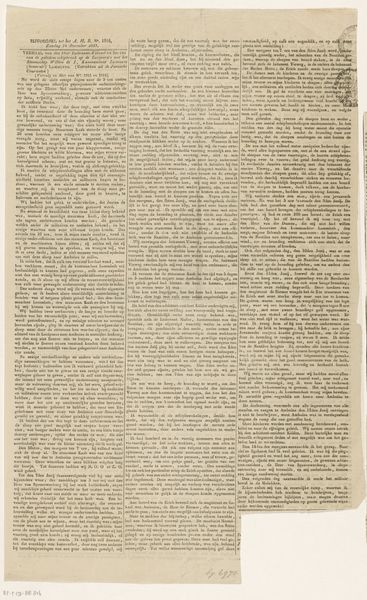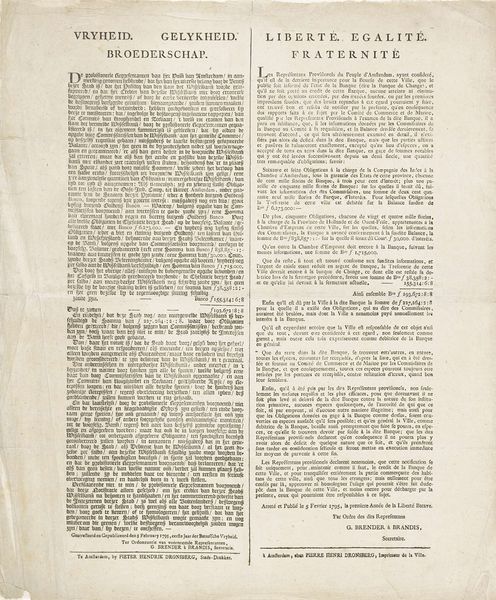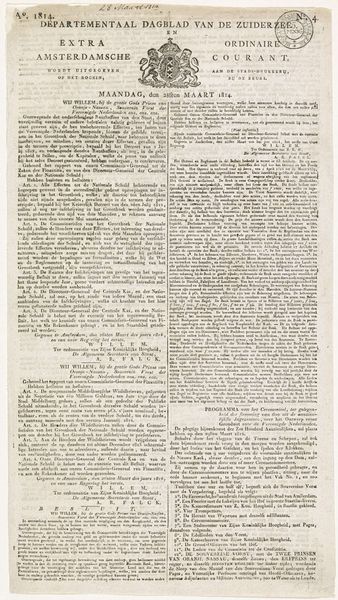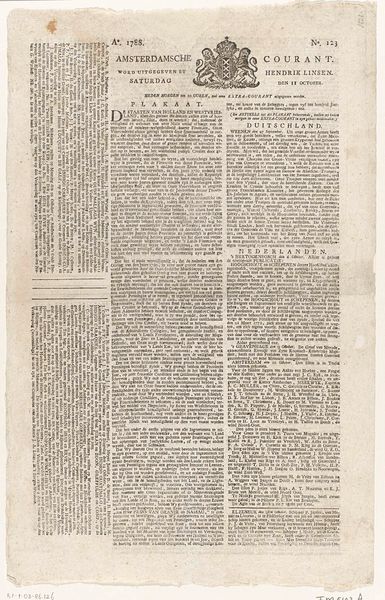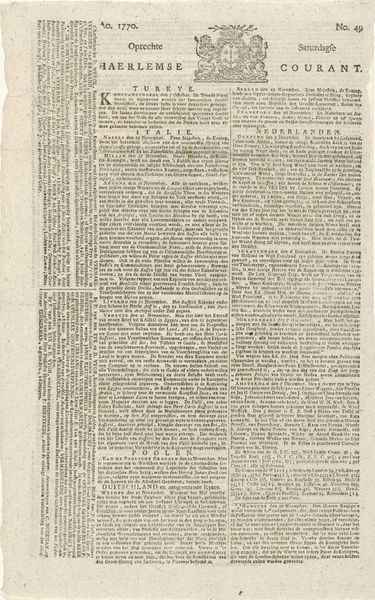
Amsterdamsche Courant van 26 december 1832 met het nieuws van de overgave van de Citadel van Antwerpen Possibly 1832
0:00
0:00
graphic-art, print, paper, typography, engraving
#
graphic-art
#
aged paper
#
dutch-golden-age
# print
#
paper
#
typography
#
journal
#
pen work
#
engraving
Dimensions: height 464 mm, width 270 mm
Copyright: Rijks Museum: Open Domain
Curator: Here we have a fascinating print: "Amsterdamsche Courant van 26 december 1832 met het nieuws van de overgave van de Citadel van Antwerpen," created around 1832 by J. van Bonga. It’s currently housed here at the Rijksmuseum. The work presents the front page of a newspaper, filled with dense typography and seemingly significant news. Editor: It looks like someone handed down history itself. It's got this yellowed, brittle feel about it just from a distance, doesn't it? It gives a really specific sense of that particular moment, like finding a relic, I like how fragile and immediate it looks. Curator: Indeed. What makes this object powerful is precisely its contextual richness. The Dutch Golden Age saw an explosion of print media, and newspapers like these played a vital role in shaping public discourse and national identity. This particular issue, announcing the surrender of the Citadel of Antwerp, highlights the intricate political landscape of the time, deeply influenced by the Belgian Revolution and the geopolitical interests of European powers. How might audiences have reacted to this announcement, given their varying political views and social standing? Editor: That's a heavy headline right there! Did this cause waves in the local cafes? Can you picture folks huddled over coffee, fingers smudged with ink? I am sensing the impact it must have had just rippling through the public. Was this something that shaped conversation for weeks maybe? Curator: Certainly. The Dutch perspective on the Belgian Revolution was multifaceted. For some, it might have represented a disruption of established order, threatening national unity and economic interests. Others might have seen it as an opportunity for political reform or even supported the cause of Belgian independence. Considering this range of opinions, one can assume that the announcement sparked intense debate and deliberation across different segments of Dutch society. Editor: Totally! What I get most from looking at this piece is how temporary information felt back then – this rush to get news printed when now news moves in seconds, the slowness of the whole thing. What could be today’s equivalent you wonder? A blog? A tweet? The news itself may be political, but it is also kind of human, right? Curator: Absolutely. And it's pieces like this that allow us to analyze this 'humanness', revealing complex historical narratives. Examining it, we can uncover subtle power dynamics, and dissect how news shapes public opinion. Editor: It almost makes me wish I could read 1832 Dutch and be right there in the debate. I am really thankful that there are artifacts like these to help bridge time for us to get better informed as an audience!
Comments
No comments
Be the first to comment and join the conversation on the ultimate creative platform.
